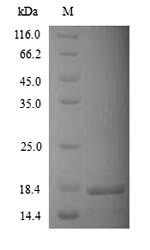Cookie preferences
This website uses cookies, which are necessary for the technical operation of the website and are always set. Other cookies, which increase the comfort when using this website, are used for direct advertising or to facilitate interaction with other websites and social networks, are only set with your consent.
Configuration
Technically required
These cookies are necessary for the basic functions of the shop.
"Allow all cookies" cookie
"Decline all cookies" cookie
CSRF token
Cookie preferences
Currency change
Customer-specific caching
FACT-Finder tracking
Individual prices
Selected shop
Session
Comfort functions
These cookies are used to make the shopping experience even more appealing, for example for the recognition of the visitor.
Note
Show the facebook fanpage in the right blod sidebar
Statistics & Tracking
Affiliate program
Conversion and usertracking via Google Tag Manager
Track device being used

If you have any questions, please use our Contact Form.
You can also order by e-mail: info@biomol.com
Larger quantity required? Request bulk
You can also order by e-mail: info@biomol.com
Larger quantity required? Request bulk
Organism: Homo sapiens (Human). Source: Yeast. Expression Region: 1-143aa. Protein Length:... more
Product information "Potassium channel subfamily K member 2 (KCNK2), partial, human, recombinant"
Organism: Homo sapiens (Human). Source: Yeast. Expression Region: 1-143aa. Protein Length: Partial. Tag Info: N-terminal 6xHis-tagged. Target Protein Sequence: MLPSASRERP GYRAGVAAPD LLDPKSAAQN SKPRLSFSTK PTVLASRVES DTTINVMKWK TVSTIFLVVV LYLIIGATVF KALEQPHEIS QRTTIVIQKQ TFISQHSCVN STELDELIQQ IVAAINAGII PLGNTSNQIS HWD. Purity: Greater than 90% as determined by SDS-PAGE. Endotoxin: Not test. Biological Activity: n/a. Form: Liquid or Lyophilized powder. Buffer: If the delivery form is liquid, the default storage buffer is Tris/PBS-based buffer, 5%-50% glycerol. If the delivery form is lyophilized powder, the buffer before lyophilization is Tris/PBS-based buffer, 6% Trehalose, pH 8.0. Reconstitution: We recommend that this vial be briefly centrifuged prior to opening to bring the contents to the bottom. Please reconstitute protein in deionized sterile water to a concentration of 0.1-1.0 mg/mL.We recommend to add 5-50% of glycerol (final concentration) and aliquot for long-term storage at -20 °C/-80 °C. Our default final concentration of glycerol is 50%. Customers could use it as reference. Storage: The shelf life is related to many factors, storage state, buffer ingredients, storage temperature and the stability of the protein itself. Generally, the shelf life of liquid form is 6 months at -20 °C/-80 °C. The shelf life of lyophilized form is 12 months at -20 °C/-80 °C. Notes: Repeated freezing and thawing is not recommended. Store working aliquots at 4 °C for up to one week. Relevance: Ion channel that contributes to passive transmembrane potassium transport (PubMed:23169818). Reversibly converts between a voltage-insensitive potassium leak channel and a voltage-dependent outward rectifying potassium channel in a phosphorylation-dependent manner (PubMed:11319556). In astrocytes, forms mostly heterodimeric potassium channels with KCNK1, with only a minor proportion of functional channels containing homodimeric KCNK2. In astrocytes, the heterodimer formed by KCNK1 and KCNK2 is required for rapid glutamate release in response to activation of G-protein coupled receptors, such as F2R and CNR1. Reference: "Cloning, localisation and functional expression of the human orthologue of the TREK-1 potassium channel."Meadows H.J., Benham C.D., Cairns W., Gloger I., Jennings C., Medhurst A.D., Murdock P., Chapman C.G.Pflugers Arch. 439:714-722(2000). Function: Ion channel that contributes to passive transmembrane potassium transport
| Keywords: | TREK, KCNK2, TREK-1 K(+) channel subunit, Two pore potassium channel TPKC1, Potassium channel subfamily K member 2, Two pore domain potassium channel TREK-1, Outward rectifying potassium channel protein TREK-1, Recombinant Human Potassium channel subfamil |
| Supplier: | Cusabio |
| Supplier-Nr: | YP012070HU |
Properties
| Application: | Activity not tested |
| Conjugate: | No |
| Host: | Yeast |
| Species reactivity: | human |
| MW: | 17.7 kD |
| Purity: | >90% (SDS-PAGE) |
Database Information
| KEGG ID : | K04913 | Matching products |
| UniProt ID : | O95069 | Matching products |
| Gene ID : | GeneID 3776 | Matching products |
Handling & Safety
| Storage: | -20°C |
| Shipping: | +4°C (International: +4°C) |
Caution
Our products are for laboratory research use only: Not for administration to humans!
Our products are for laboratory research use only: Not for administration to humans!
You will get a certificate here
Viewed

